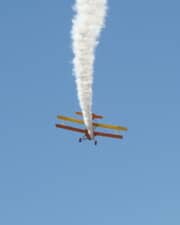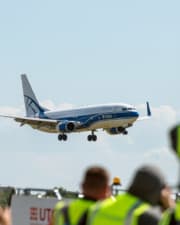Many people have heard of the NTSB, but few realize the importance of this government organization. So what is the NTSB, what do they do, and how do they do it?
The National Transportation Safety Board (NTSB) is the US government body in charge of investigating not only airplane crashes, but accidents in other transportation sectors like railways and shipping. The organization is unique – it is not part of any other government agency or administration. It is not part of the FAA nor the Department of Transportation (DOT).
The NTSB’s job is to determine the causes of accidents and safety issues in the transportation sector. They keep the other agencies, whose job it is to regulate, honest. The US NTSB is well-respected worldwide as an example of how governments should conduct unbiased accident investigations.
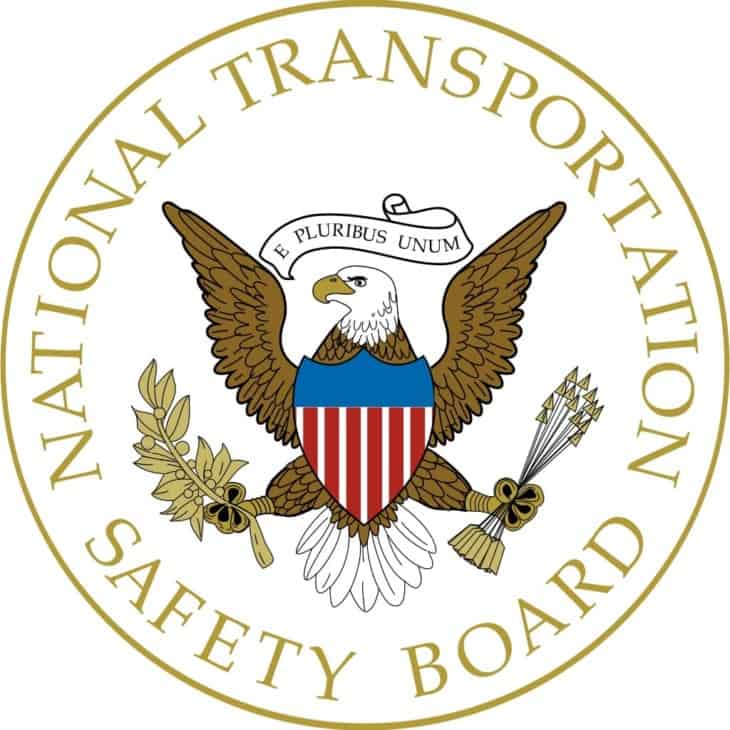
History of the NTSB
The earliest roots of the NTSB can be traced back to the Air Commerce Act of 1926. That law formed the Civil Aeronautics Board (CAB) and gave it the responsibility of both regulating and investigating aviation accidents.
But it quickly became apparent that having one organization make the regulations and then investigate itself wasn’t the best setup. Would such an organization ever admit that the rules were inadequate or poorly enforced?
The CAB eventually became what we call the FAA today. In 1967, the National Transportation Safety Board was created as an agency separate from the FAA but still under the Department of Transportation (DOT).
Congress made changes to the Board over the years, making it progressively more independent with each step. In 1975, they passed the Independent Safety Board Act and made it a completely separate agency within the government.
As such, the NTSB members are appointed directly by the President and confirmed by the Senate. The NTSB is not under the FAA, nor is it part of the Department of Transportation. Instead, these entities operate as separate arms of the government.
This separation intends to ensure that someone is watching the regulators. In aviation, this means that if a rule is inadequate to foster safety, the NTSB is there to call the FAA out. Likewise, if the FAA is not enforcing the rules, the NTSB adds a level of accountability.
What Does the NTSB Do?
The National Transportation Safety Board investigates:
- All US civil aircraft accidents
- Some highway accidents
- Railroad passenger train accidents, or freight rail accidents that result in a fatality
- Major marine accidents
- Pipeline accidents involving a fatality, or significant property or environmental damage
- Accidents resulting in the release of hazardous materials, regardless of the mode of transportation
- Transportation accidents due to problematic or recurring problems, or catastrophic events
- Assist families of accident victims and coordinate the federal response
Besides investigating accidents and incidents, the NTSB has a few other lesser-known responsibilities. The Board acts as an appeals court for certified airmen and merchant mariners who have had their licenses revoked by the FAA or Coast Guard. They are also sometimes asked to help with investigations that are outside their regular jurisdictions. They may assist foreign governments with investigations upon request.
NTSB — Specific Areas of Expertise
Aviation Safety
Most people associate the NTSB with aircraft accident investigation. This is what most people see on the news, and it is one of the Board’s primary responsibilities. The Board was born from the 1920’s CAB, whose role was to regulate aviation and investigate accidents. As the Board grew and became more independent, only then did it take on additional responsibilities.
Most investigations the NTSB participates in are civilian aircraft accidents, but they sometimes assist the military in accident investigations, as well.
Specifically, the Board investigates all major airline crashes in the US, including air carriers, commuters, and air taxi operators. They also participate in other countries when US carriers or US-made aircraft are involved. Besides air carriers, the NTSB is always involved in any fatal general aviation accident and any mid-air collisions.

Besides accident investigation, the Board also conducts studies and research into industry safety issues.
A few of the safety improvements implemented thanks to NTSB recommendations include better pilot training, air traffic control procedures, aircraft maintenance practices, and aircraft design requirements.
Highway Safety
Most highway laws and regulations in the United States are state-controlled. As a federal body, the NTSB has the authority to investigate all highway accidents, but it does so in cooperation with state officials.
There are far too many highway accidents for the NTSB to investigate even a small percentage. They choose the problems that they want to investigate carefully.
The Board always investigates some significant events. For example, failures or collapses of bridge structures, fatalities on public transportation, and collisions at grade crossings involving trains and public transportation.
Marine Safety
As with their relationship to the FAA, the NTSB has a similar relationship with the US Coast Guard. The NTSB and the USCG have a Memorandum of Understanding as to how investigation responsibilities will be divided.
Specifically, the NTSB is most interested in significant accidents, accidents involving US merchant vessels in international waters, and collisions between public and privately-owned vessels.
Railroad, Pipeline, and Hazardous Materials Safety
The agency is involved in most major train accidents, but they pay special attention to any accidents involving public transit.
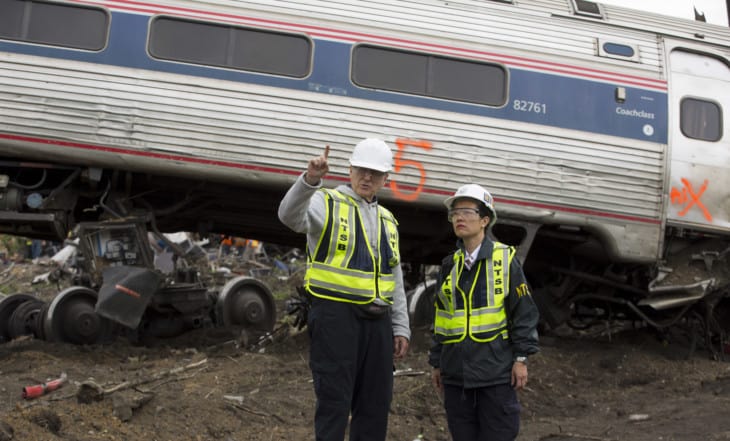
Pipelines are investigated anytime there is a fatality, major property damage, or a reoccurring problem. They look at any sort of pipeline, but they’ve recently been involved in investigations of those carrying natural gas, petroleum, or highly volatile liquids that pass through populated areas.
NTSB Organizational Structure
The central Board is appointed by the President and confirmed to their posts by Congress. There are five members on the Board who serve five-year terms. Of the five, two are chosen by the President to serve as Chairman and Vice-Chairmen for a two-year term.
The Board is headquartered in Washington DC and has regional offices in Seattle, Miami, Los Angeles, Dallas-Fort Worth, Chicago, Parsippany (New Jersey), Anchorage, Atlanta, Denver, and Ashburn (Virginia).
NTSB Process
Go-Team and Investigation
The most prominent public duty the NTSB performs is the “go-team.” This team of investigators shows up at major accidents and incidents to begin the collection of factual data. The team is on call, 24 hours a day, seven days a week, 365 days a year.
The Board has different go-teams for each area of specialization. For aviation accidents, the go-team will consist of a lead investigator and experts in witness interviewing, meteorology, air traffic control, and aircraft systems, design, and operation.
Similarly, the go-team for a marine accident will have experts in ship design, engineering, watch keeping, deck officers, and lifesaving equipment.
On major investigations, a Board member will usually accompany the go-team. They will serve as the public relations officer who coordinates media actives.
Once the team identifies the stakeholders in an investigation, they use a “party system” to further their investigation. They seek out expertise from all involved parties — the FAA, the aircraft operator, the aircraft manufacturer, and training providers or experienced pilots. The go-team decides what expertise is needed on the investigation on a case-by-case basis.
The NTSB investigation is usually done in parallel with multiple other investigations. If criminal wrongdoing is involved, city, county, state, or federal law enforcement may conduct their own investigations. The responsible regulator will conduct an investigation, too. In the case of aviation accidents, this will be the FAA.
The federal agencies that the NTSB regularly coordinate with include–
- Federal Aviation Administration (FAA)
- Federal Railroad Administration (FRA)
- Research and Special Programs Administration (RSPA)
- US Coast Guard (USCG)
- National Highway Traffic Safety Administration (NHTSA)
- Federal Highway Administration (FHWA)
- Federal Transit Administration (FTA)
- Federal Motor Carrier Safety Administration (FMCSA)
- Other state and federal law enforcement agencies
The purpose of the NTSB’s investigation is to determine probable cause. The entire reason that the NTSB is independent and must coordinate with these other agencies in parallel investigations is to determine if that agency or its policies played a role in the accident.
Factual Report Produced
A big part of the NTSB’s job, especially at major accidents that have media coverage, is to inform the public of the facts involved in the accident. The NTSB process is extensive, but it is usually many months before a probable cause is determined.
In the early days after an accident, the Board coordinates media interviews and conducts press briefings to present the facts of the investigation. The goal is to avoid speculation on the part of the media and the public.
The NTSB releases the first tidbits of information within a few weeks of an accident. This is a simple factual report, which contains a collection of the known facts about the accident.
It is usually relatively short, around a paragraph. It happened as such and such a time and place, and this is what occurred. It also includes pertinent details regarding the weather and scene location.
You won’t find many details in the factual report since the NTSB has only just begun their investigation. The process of finding a probable cause can take months or years in some cases.
The factual report is the first publicly available information that the NTSB puts in the “Public Docket.” The docket is available at NTSB headquarters in Washington DC and on ntsb.gov. As more information becomes available, it is added to the public docket.
Public Hearing
Once all of the facts have been found out in the investigation, the hard work is over. The Board analyzes these facts and makes their final recommendations as to the probable cause of the accident. The report will also list any contributing factors.
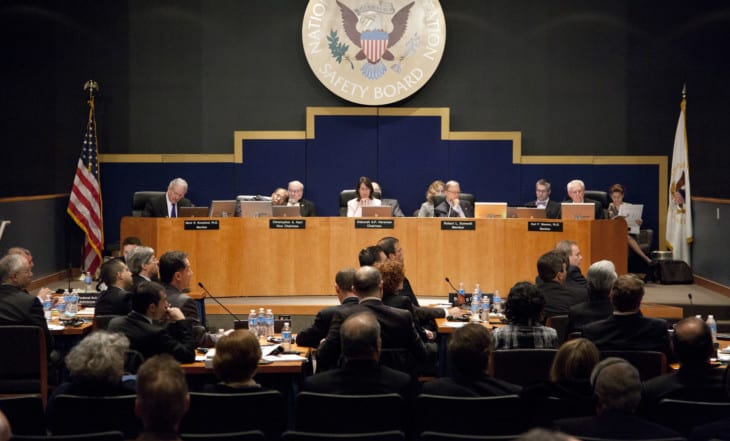
If the investigation is about a major accident, the accident report will be presented at a public meeting to the five-member Safety Board in Washington. Smaller investigations are filled via written reports.
Final Accident Report
The most important task that the Safety Board completes is their compilations of safety recommendations. In many ways, the organization’s entire purpose is to ensure those horrible accidents never repeat themselves. They want to know why things happened, and when they figure it out, they come up with recommendations to ensure it doesn’t happen again.
Recommendations are directed to a person or specific organization that can implement these changes to the system. The Board’s recommendations are not mandatory, but Congress requires Department of Transportation agencies and administrations to respond within 90 days.
NTSB Safety Recommendations
One lesser-known task the NTSB completes is what they call the “Safety Most Wanted List” every two years. These are all of the things that NTSB wishes other agencies or companies would do, and if they would do them, then lives would be saved. The recommendations span all of the Board’s areas of specialization.
The 2019-2020 Most Wanted List can be downloaded here. It contains 268 recommendations, some of which have already been addressed.
The Board directs their recommendations to a number of stakeholders. Many of their ideas are aimed squarely at the regulators, like the Federal Aviation Administration (FAA) or National Highway Transportation Administration. Others target lawmakers, like a specific state or federal legislatures. And finally, others target specific equipment manufacturers.
The current NSTB Most Wanted List of Safety Improvements falls into the following categories.
- Eliminate distractions in all sectors
- End alcohol and drug impairment in all sectors of the transportation industry
- Ensure safe transport of hazardous materials (HAZMAT)
- Fully implement positive train control
- Reduce speed-related highway accidents
- Improve Part 135 aviation safety
- Implement collision avoidance systems on highway vehicles
- Reduce fatigue-related accidents in all sectors
- Require medical fitness screening for obstructive sleep apnea for highway and rail operators
- Strengthen occupant protection in all modes of transportation
NTSB Laboratory and Training Facility
To ensure an unbiased and accurate analysis of all of the data, the NTSB maintains its own laboratory. They can perform very specialized tasks, like analyzing and reading data from black boxes, also called cockpit voice and flight data recorders. They can analyze metal fragments, damaged instruments, and many other clues they find at accident sites.

In Ashburn, Virginia, the NTSB operates a training academy. While the academy’s purpose is to improve the training and skills of NTSB employees, it is made available to the transportation community.
On-site at the facility, the NTSB has a 93-foot long reconstruction of the fuselage from TWA Flight 800, which was lost off the coast of New York in 1996.

The Boeing 747 exploded and broke apart in flight. The investigation into the loss of Flight 800 was the NTSB’s most extensive and most prolonged in the organization’s history. The four-year process determined that fuel vapors exploded in the aircraft’s center tank, likely from a short circuit.
As a result of the investigation, new standards were recommended for how manufacturers could prevent fuel tank explosions.
Related Posts



